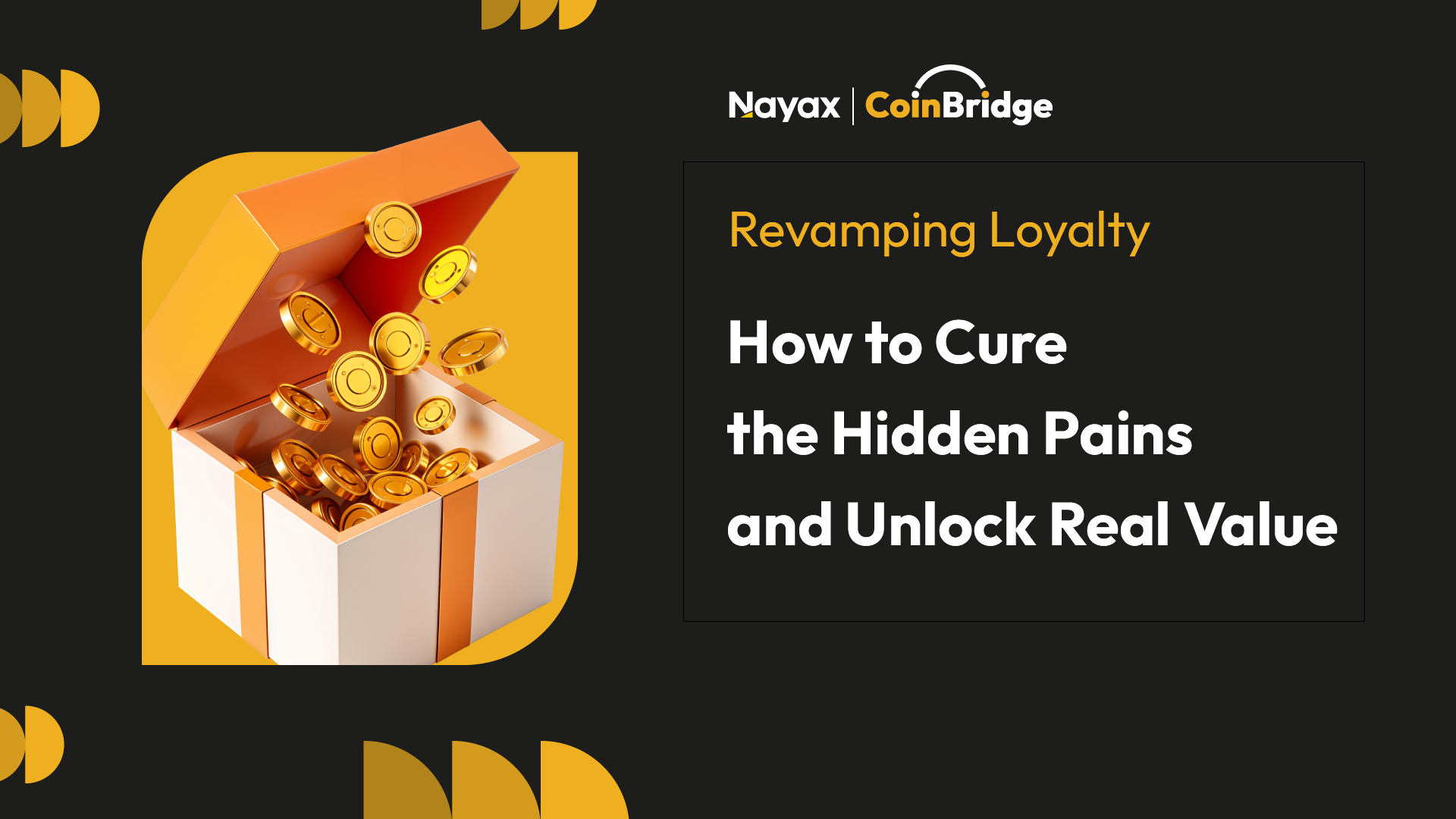According to the US Bond Loyalty ReportTM published in partnership with Visa, the average consumer has 19 loyalty memberships – but they tend to be active in only 9 of them. In fact, the average person is holding on to £47 worth of points – a figure that equates to £6 billion-worth of unspent rewards in the UK and over $360 billion-worth languishing unused, worldwide.
These incredible figures indicate that something is sorely amiss in the loyalty world. If customers see so little value in loyalty programs that they sign up with (and with multiple competing brands) and then let their rewards sit unused, what does this imply about the value of loyalty in terms of engagement? And how can brands use these programs as a way to increase customer engagement, thereby making a meaningful impact on the business’s bottom line?
It seems clear that to truly increase customer engagement and spending, brands must increase the perceived value of their loyalty programs. To do this, one must first understand the Achilles’ heels of loyalty – the unwanted side effects that are preventing brand’s from maximizing their loyalty performance.
Same old, same old
The loyalty industry hasn’t really undergone too any dramatic change in recent decades. The basic premise remains as it has always been: customers are rewarded for their spending with a brand with some kind of loyalty-asset; those assets are redeemable within the brand’s own outlets, or in some cases, at a select group of participating merchant partners – and according to certain rules that may or may not relate to customer preferences.
The result of this lack of differentiation is that consumers may find themselves members of multiple loyalty programs in the same domain – say supermarkets. After all, they’ve nothing to lose and everything to gain: one week, Tesco might offer a double points promotion, so the customer does their big shop there; the next week, they see that Sainsbury’s has an offer on their favourite brand of coffee, so they shop there too. It’s a win for the customer, but less so for the brand.
Focusing on the benefits rather than the brand itself fosters opportunism, not loyalty.
Aligning benefits, choice, ease of access and loyalty is key, and this requires seamless, simple redemption payment solutions. By coupling loyalty with payments, CoinBridge is changing the paradigm of how loyalty is practised and perceived. Yes, the loyalty assets themselves are a reward for brand loyalty but if spending them is brand agnostic, it provides greater and more relevant choice. In this way, loyalty and opportunism are able to happily coexist, giving the brand a huge edge over traditional loyalty programs, with all their limitations.
Dazed & confused
Another challenge relates to how loyalty programs work. While it’s usually clear enough how assets are collected, understanding the system for spending them can leave customers feeling frustrated and disillusioned – the opposite of what the program is designed to achieve!
The value of a ‘point’ tends not to be intuitive – 1 point rarely equals £1 or 1p– and may even change, depending on the item for which it’s being exchanged. What’s more, seasonal offers, in which the value of points may be doubled or tripled “for a limited time only”, or tiers in which members get different points-to-cash exchange rates as they hit specific milestones, only add to the confusion. Frankly, it can be hard to keep up. Such complexities cause friction in the redemption process, making points seem more hassle than they’re worth, and giving customers the feeling that their loyalty isn’t valued after all.
The CoinBridge Loyalty-to-Payments™ solution simplifies redemption, by enabling customers to turn their hard-earned points into spendable money in a seamless way. Each point has a defined monetary value, set of-course by the brand, which stays the same at any outlet and redemption opportunity: this monetary value is clearly shown in the loyalty app alongside the reward balance and that is the amount the customer has available to spend, no further calculations required. Furthermore, they can spend it on whatever they like, in a simple ‘Tap & Go’ experience. Giving customers such clarity and simplicity, brands ensure there are no surprises at the checkout – just a natural, pleasant shopping experience that reflects well on the brand itself.
Turning effort into tangible value
The third reason that customers fail to engage with their loyalty programs is that rewards accrual can be a Sisyphean tale, and thus the rewards they receive are perceived to have little impact on their day-to-day lives. With traditional collection-based programs, it can require a lot of effort on the part of the customer to accumulate a ‘usable’ amount of assets. Consider airmiles, as an example. After spending thousands of pounds on their credit card, the airmiles customers accumulated may only be enough to take a local economy class flight, with limited availability on relevant seats, meaning that tickets have to be bought months in advance. Then, tax has to be paid – sometimes costing as much as a low-cost ticket with another airline! The points value is too low to be meaningful, and the loyalty pay-off simply isn’t enough to be enticing.
Once again, Loyalty-to-Payments™ has the answer. By converting points directly to a monetary value, no amount is too small to be redeemed. This means that customers can enjoy the benefit of their available balance at any time and on anything they like, without having to wait to hit a given minimum. Even a low-value, ordinary purchase – say a bar of chocolate, or pint of milk – feels like a win when bought with points, increasing the feel-good factor along with the impact of the loyalty program. Another benefit for the business is that enabling customers to spend smaller sums increases engagement frequency (through the loyalty app), keeping the brand top of mind.
Use ’em or lose ’em
Many loyalty programs have expiration dates for rewards, which is typically one to three years after accrual. Limited redemption windows can create a sense of urgency that causes customers stress, at best, and leads to missed redemption opportunities at worst. Imagine seeing your balance of thousands of points suddenly disappear before you’ve managed to use them. This may even give the customer a feeling of being cheated, causing a sense of frustration and dissatisfaction with the brand – not exactly conducive to building loyalty and advocacy.
By allowing customers to redeem their rewards in any amount, at any shop, on any goods, Loyalty-to-Payments™ reduces the risk of reaching the expiration date – if there even is one – with a large balance. It’s so easy to use the assets that there’s no reason not to use them to the fullest, so there’s no chance of customers developing negative emotions toward the brand for losing their points.
Shifting the paradigm
There are several unwanted side-effects of how loyalty programs are currently practiced, which can potentially alienate customers, rather than fostering engagement, loyalty and spending. Introducing CoinBridge’s groundbreaking Loyalty-to-Payments™ solution is a key way to maximise the performance of loyalty programs, ensuring that they have a positive, meaningful impact on the customer experience, and with it, business results.
The Loyalty-to-Payments™ revolution has already begun! Visit coinbridge.com and see for yourself how this solution is changing customer perceptions of loyalty.


